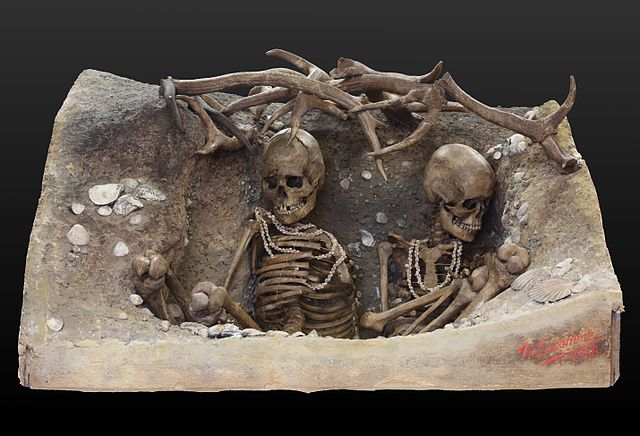A ship burial or boat grave is a burial in which a ship or boat is used either as the tomb for the dead and the grave goods, or as a part of the grave goods itself. If the ship is very small, it is called a boat grave. This style of burial was practiced by various seafaring cultures in Asia and Europe. Notable ship burial practices include those by the Germanic peoples, particularly by Viking Age Norsemen, as well as the pre-colonial ship burials described in the Boxer Codex in the Philippines.
Excavation of the Oseberg Ship burial mound in Norway
Planks from one of the Butuan boats (c. 320 to 1250 AD) from the Philippines
Model of the structure of the Sutton Hoo ship (c. 7th century AD) it might have appeared, with chamber area outlined
Burial, also known as interment or inhumation, is a method of final disposition whereby a dead body is placed into the ground, sometimes with objects. This is usually accomplished by excavating a pit or trench, placing the deceased and objects in it, and covering it over. A funeral is a ceremony that accompanies the final disposition. Evidence suggests that some archaic and early modern humans buried their dead. Burial is often seen as indicating respect for the dead. It has been used to prevent the odor of decay, to give family members closure and prevent them from witnessing the decomposition of their loved ones, and in many cultures it has been seen as a necessary step for the deceased to enter the afterlife or to give back to the cycle of life.
Unearthed grave from the medieval Poulton Chapel
Reconstruction of the Mesolithic tomb of two women from Téviec, Brittany
A naturally mummified body in the British Museum
A Muslim cemetery in Sahara, with all graves placed at right angles to distant Mecca







